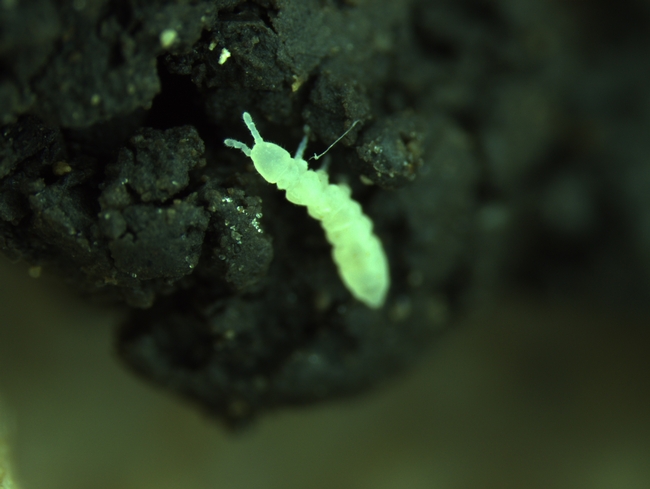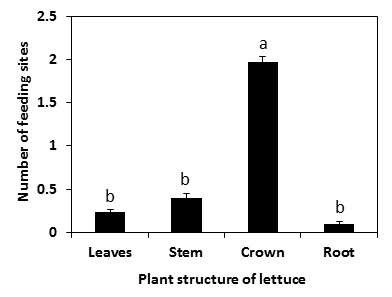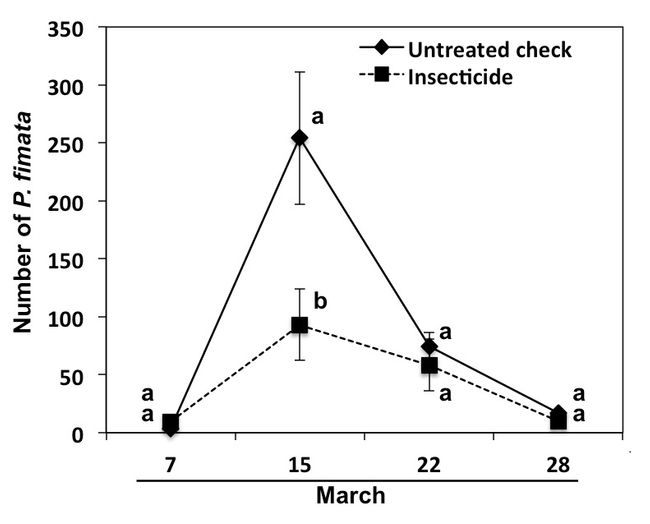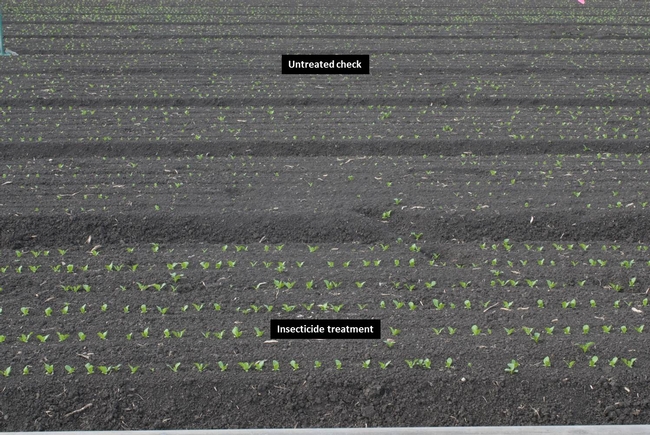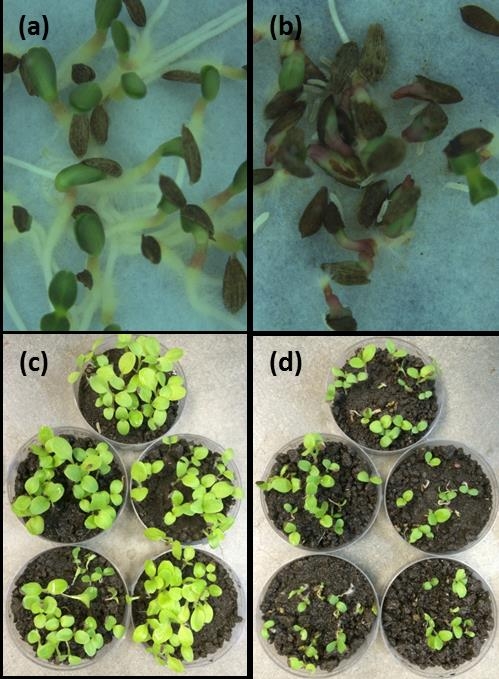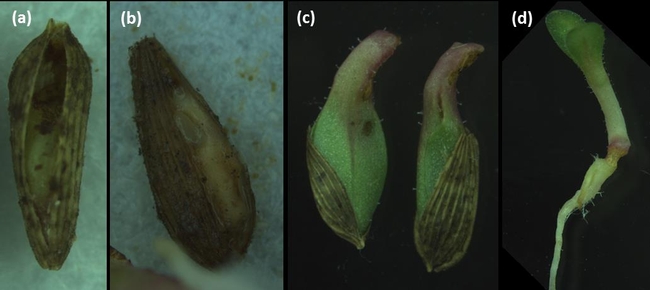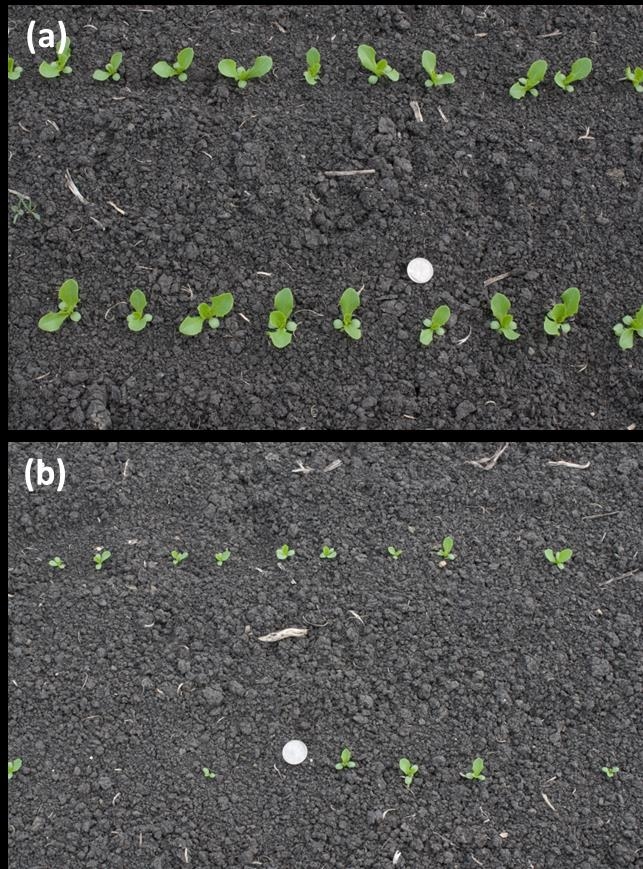Growers in the Salinas Valley facing an irregular lettuce stand are usually uncertain about what caused the problem and often blame the factors such as poor seed quality, planting error, irregular irrigation timing or distribution, high salt levels in the soil or water, soilborne pathogens of seedlings, bulb mites, and garden symphylan feeding for the losses. Several springtails were collected from the soil associated with lettuce and it is not clear if they were feeding and contributing to the irregular lettuce stand. Often, this springtail is misidentified as garden symphylan.
Recently, I found a large number of a subterranean springtail (Protaphorura fimata) (Fig. 1) in the monitoring potato slice traps deployed in Salinas lettuce fields. I did a series of laboratory and field studies to determine its pest status in lettuce. This springtail (P. fimata) is less than 2.5 mm long, white in color and lacks eyes. Unlike other springtails, this springtail lack a furcula (jumping organ), and when disturbed it does not jump instead curls up. Other similar species of springtails primarily reproduce parthenogenically meaning they reproduce without mating; however, sexual reproduction is also seen on this one (P. fimata). This species (P. fimata) seems to be widely distributed in Europe, but has not been previously reported from the U.S.
Springtails occur in diverse habitats worldwide and are generally considered as beneficial arthropods because they aid in the decomposition of decaying plant material by feeding, thereby contributing to the cycling of carbon and nitrogen which in turn improves soil health and structure. This springtailis primarily known to feed on soil fungi but also feeds on live plant roots. Other springtails in the same family have been associated with feeding damage to germinating sugar beet seeds, sugarcane, poppy seeds and weed seeds (Plantago major). Foliage-feeding springtails (lucerne flea and garden springtail) attack several plants including Lucerne (Medicago sativa), clover (Trifolium sp.), sugar beet (Beta vulgaris) and bean.
The major objectives of the present study were to document the ability of springtail (P. fimata) to injure germinating seeds of lettuce in laboratory and field and characterize the feeding injury of springtail on germinating seeds and seedlings of lettuce.
In the laboratory, I conducted experiments in plastic petri dish with and without soil and sprigtails. Then I recorded the ungerminated lettuce seeds due to feeding injury, total number of feeding injury sites, and number of germinated seedlings with distinct feeding injury. I also documented the location (e.g. leaf, stem, plant crown or root) of the feeding injury on the plants. I conducted a field study too. The assumption of the field study was that the repeated use of maximum label rate of selected insecticides at early stages of plant development would suppress springtails and protect the seeds or seedlings from feeding. Two commonly used pyrethroid insecticides were applied (by the grower) three times: 2 days before planting, at planting, and 20 days after planting. Applications were made using a commercial tractor mounted sprayer. Two pyrethroid insecticides used were Mustang (4 fl oz per acre) and Warrior II (1.6 fl oz per acre). Both the Mustang and Warrior II were tank mixed and applied at 2 days before planting and 20 days after planting but only Warrior II was applied at planting to conform to the label. An adjuvant, Widespread Max (2 fl oz per acre) was added with all the applications. I used bait slices to monitor the springtails at weekly intervals. They were placed in the soil at 1.5 inches deep along the seed line and were covered with disposable white plastic bowls. At the end of each 2 days exposure period, beet root slices were removed, placed into plastic bags and transported to the laboratory. In addition, plant samples were collected to assess the plant growth. Please read the full Journal article for details.
Results demonstrate that this springtail (P. fimata) can feed on germinating lettuce seeds or young seedlings, resulting in reduction in lettuce growth (Figure 2).Springtails attacked seeds and young seedlings alike. In the laboratory, springtails directly fed through the seed coat (pericarp) of a few seeds. This is possibly due to the moistening of the pericarp, enabling springtails to feed through the softened coating (Fig. 3a and b). In some instances, springtails fed on the growing radicle of the germinating seeds (Fig. 3c). However, most of the feeding at the seed radicle or elsewhere did not entirely sever it (Fig. 3d), which allowed the seedling to survive but affected the normal development of the plant. Moreover, most of the feeding injury was evident at the crown area rather than on leaf, stem, or root (Fig. 4).
In the Salinas Valley, before the lettuce seeds are planted, fields are watered deeply and irrigations continue for at least three weeks after planting. I observed that the springtaildensity increased when the field was recently irrigated or after a rain event. This cultural practice which maintains high moisture levels for seed germination on the sub-surface profiles of the soil might be favoring faster buildup of springtailpopulations. In the field trial, the springtailcaptures were greater immediately after irrigation in the untreated beds than insecticide treated beds which was reflected in reduced number of springtails and in the untreated beds (Fig. 5).
In conclusion, this study clearly demonstrates that springtail (P. fimata) is an important pest of lettuce and is capable of reducing the crop stand. Incidence of high populations of springtail could be detrimental to germination of seeds in the field (Fig. 6 and 7). Springtails could be effectively suppressed to a large extent with early applications of insecticides directed to the seed line. Monitoring is the key to determine the presence and population size of springtail. Currently, I'm conducting for laboratory and field studies to determine the efficacy and application timing of insecticides.
Again, please use the link below to read the full article.
http://cemonterey.ucanr.edu/files/206762.pdf
